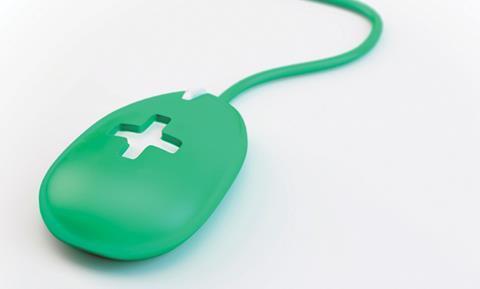Everyday technology such as mobile phones and Skype can give patients more control of their care, helping them to fit their health needs around their daily lives, writes Helen Crisp

Telehealth, in all its forms, has gone from strength to strength over the last few years with innovative practices springing up across the country.
We at the Health Foundation too have supported several projects using existing telecommunications technology in innovative ways to improve quality while saving costs through our Shine programme.
The projects have been very successful in stimulating ideas and action by frontline staff, giving them the space to innovate, own and grow the project from the start.
‘The use of technology does not always need expensive development of new equipment or software’
Everyday technology – such as mobile phones – can give patients more control of their care, helping them to fit their health needs around their daily lives.
Three Shine projects used computer and mobile phone technology to connect with service users, facilitating better continuity of care.
The key learning from these innovative projects is that the use of technology does not always need expensive development of new equipment or software.
Automated texts
Stoke on Trent Clinical Commissioning Group developed an automated texting service – nicknamed “Flo” – to support effective management of patients with hypertension.
Using Flo, patients regularly text their blood pressure reading to a phone number linked to a secure server. Based on the data received, an automated response from Flo advises patients whether their readings are within range, or if they need to take corrective action to lower their blood pressure or seek professional advice.
It also allows for interrogation of the data through a secure website, enabling a GP to monitor the patient’s submitted data.
Outcomes:
- Patients said they found the system very easy to use and it helped them understand more about their blood pressure.
- The service also demonstrated cost benefits; at £5 per week per patient to use as opposed to £24 per surgery appointment.
- Since its inception Flo has won several awards and has been taken up by over 60 NHS organisations that use it to keep in touch with patients and help to manage conditions, such as asthma, smoking cessation and heart failure.
- The Flo project team leader, Phil O’Connell, won NHS innovator of the year in 2012 for this ground breaking work.
‘Patients found the system easy to use and it helped them understand more about their blood pressure’
Bolton CCG’s Alcohol Relapse Prevention Project also used mobile phone texts to support clients.
Key workers and clients jointly developed messages that were personalised, helping to capture factors motivating the client to want to stop drinking.
A daily “mood and behaviour monitoring” text message helped clients stay in touch with the service between appointments.
Outcomes:
- Clients described how the text messages gave them a sense of continuity and provided support by acting as a reminder of the reasons they wanted to stay off alcohol, helping them to avoid relapsing.
- The project showed the potential to reduce the costs of people dropping out of the programme and then being re-referred to start the treatment again. It has been taken up by more services in the area.
- It is being assessed by Public Health England as a potential programme template to address drug misuse relapse.
Webcam appointments
Barts Health Trust has used another “off the shelf” telecommunications approach, called Diabetes Appointments via Webcam in Newham (DAWN); using Skype via standard webcams on computers, laptops and smart phones to provide routine follow up appointments online.
Research showed that many residents in the Newham area were already familiar with Skype, using it to connect with family and friends abroad.
Outcomes:
- Patients felt the service was “just the same” as attending in person or “better” because they felt more in control of the conversation.
- They reported that web consultations saved them time, were cheaper, far more convenient and they would be more inclined to attend them.
- It increased the efficiency of the service as fewer patients missed their appointments with better health outcomes and associated decreases in accident and emergency admissions.
- The Skype model of engagement is now being rolled out across the trust for a range of clinical conditions.
Tips for telehealth success
- Where appropriate, use existing technology familiar to both staff and patients.
- Ensure early involvement with all stakeholders, particularly potential patient users.
- Create strong links with IT providers to ensure technical and confidentiality issues are addressed.
- Keep user information simple and jargon free.
These projects have been successful in using standard IT equipment that health professionals and service users already use in their daily lives.
‘These projects have been successful in using standard IT equipment that health professionals and service users already use’
Such an approach improves the accessibility and efficiency of services, especially by making better use of both patient and staff time.
The reach and spread of all these projects has been impressive; all have evolved from a single clinical team initiative into something bigger and better.
These examples demonstrate how frontline staff can effect change in innovative and practical ways.
Helen Crisp is assistant director at the Health Foundation



























No comments yet